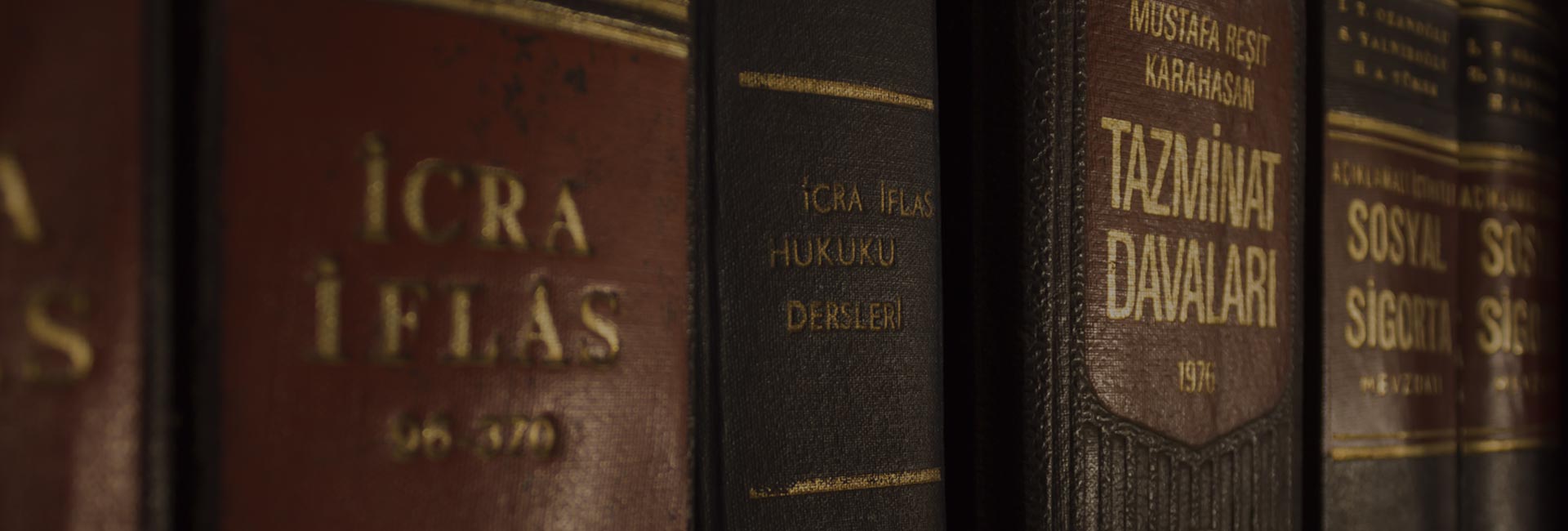如何理解和适用反垄断法第17条中的“不公平的高价”
如何理解和适用反垄断法第17条中的“不公平的高价”
时间:2022-02-23 来源:LexField张宏斌
1. 美国的反垄断法的立场-“不公平的高价”接近本质合法
(1) 对于滥用市场支配地位的行为,美国的反垄断法关注的是拥有市场支配地位的经营者是否通过排斥或限制竞争的方式获得或维持其市场支配地位;不同的是,对于合法的垄断者,例如,由于其产品本身的竞争优势导致天然的具有市场支配地位,其可以收取任何价格,这不会违反美国的反垄断法。[1] 也有学术总结,对于合法的垄断者所收取的垄断价格/Monopoly Pricing,接近于“本质合法”。[2]
(2) 对于上述的立场,其合理性包括,限制垄断价格/Monopoly Pricing的后果会消减竞争和减少创新,这与反垄断法要激励竞争的目的不符,这是因为,竞争和创新的最大动力来自于获得垄断利润,如果通过反垄断予以限制价格,反而会减损竞争和创新的动力,[3] Trinko [4]很可能是影响最为深远的案例,美国的最高法院认为“ [t]he mere possession of monopoly power, and the concomitant charging of monopoly prices, is not only not unlawful; it is an important element of the free-market system. The opportunity to charge monopoly prices at least for a short period is what attracts business acumen in the first place; it induces risk taking that produces innovation and economic growth.”[5] 此外,另一个现实的考虑是,如果对垄断价格/Monopoly Pricing进行规制,则实际上赋予了法院或执法机构来决定什么是公平的价格,这实际上是对价格进行“管制”,这反而会扭曲市场机制,因为,法院或执法机构没有能力去划定一个公平的价格。[6]
2. 欧盟的反垄断法的立场-不公平的高价构成滥用市场支配地位[7]
(3) 类似于我国反垄断法第十七条的措辞,Article 102(a) of the Treaty on the Functioning of the European Union (TFEU) 使用的是“UNFAIR PRICE”,[8] 对于垄断高价予以规制的合理性在于保护消费者的利益,[9]更具体的来说,在于防止 “Allocative Efficiency Loss”。[10] United Brands 案[11]提供了至今依然有效的分析框架,在该案中,The European Court of Justice提供了两步的分析框架,第一步是确定是否构成过高的价格,在该案中,是通过比较成本和销售价格的幅度来确定,[12] 如果通过第一步确定构成“过高”的价格,那么进行第二步,进一步判断该“过高”的价格是否构成“不公平”。[13]
(4)关于上述第一步的“过高”价格的判断,有采用不同于上述United Brands 案的成本-销售价格标准,例如,另一种判断的尺度为,比较销售价格和充分竞争环境下的价格的差异作为标准,[14]并且进一步的综合考虑以下因素来判断是否构成“过高”的价格:“(i) the absolute size and stability of that differential; 139 (ii) the reasons for it, taking account of the fact that the conditions for excessive pricing will only usually occur where the market is one where regulation, or some similar feature, or other barriers to entry, protect it from competition, or where there is regulatory failure and the relevant regulator has not intervened; (iii) previous decisions finding other differentials excessive, weighted for the markets applicable in those cases; (iv) the wider market conditions, including the evolution of pricing over time.”[15]
值得说明的是,在Flynn案里[16]采用的“比较销售价格和充分竞争环境下的价格的差异作为标准”,法院不认为是违背了United Brands 案的标准,理由是,United Brands 案所提供的成本-价格分析框架并不是唯一的标准,而该案中阐述的之所以要规制不公平高价的理论依据是,避免垄断者获得高于竞争环境下的收益之上的收益,[17] 根据该上位的理论依据,Flynn案里采用的“比较销售价格和充分竞争环境下的价格的差异作为标准”符合该理论依据的本意。
(5) 关于第二步是否构成“不公平”的判断,在Flynn案里,[18] 采用的标准更加具体,系评价商品的经济价值,并且确定销售价格是否与该经济价值有关联。[19]
(6)尽管与美国反垄断法接近“本质合法”的观点不一致,欧盟也意识到对垄断高价构成滥用应采取非常谨慎的态度,[20]因为,通常情况下,市场的竞争会自发的纠正垄断高价,而如果垄断高价确实存在,除非是相关市场有严格的进入壁垒,否则,该垄断高价可能更多的是反映了相关商品的供给和需求的市场均衡,所以,垄断高价构成滥用应仅在存在政府管制或者有足够严酷的进入壁垒存在的场合下进行考虑。[21]
3. 解读和适用我国反垄断法第17条中的“不公平的高价”
(7) 我国反垄断法第17条第(一)款将“不公平的高价”列为滥用市场支配地位的行为之一,显然,这不同于美国接近“本质合法”的立场,而更接近于欧盟的立场;但是,我国反垄断法第17条列举的滥用行为(包括“不公平的高价”)采取了并列的排列,从法条上没有体现出类似于欧盟通过案例体现出来的应谨慎适用“不公平的高价”构成滥用的观点。[22]
理论上,无论是美国、欧盟或者中国,在市场经济的框架内,市场的客观规律是共同的,价格是市场竞争的核心信息和要素,反垄断法对价格的干预应保持最谨慎和最克制的态度,避免以垄断的名义去干涉市场供求产生的价格;事实上,我国的反垄断执法机构似乎也意识到其中的问题,有认为“认定不公平的高价一直是反垄断执法的难点问题。……。反垄断执法机构不是定价部门,难以评估确定商品的价格,……。”[23] 在这方面,POPOFESKY将具体行为从“本质合法”到接近“本质违法”的总结非常有意义,[24] 在该图谱中,体现了美国反垄断法的立场,垄断高价属于“本质合法”的范畴。
此外,“实践是检验真理的唯一标准”,[25] 如上述第(6)段,尽管欧盟对不公平高价构成滥用采用了肯定的立场,但是,实践中最终认定高价构成滥用的案例是比较少的,[26]多集中在药品、版权集中许可以及水电基础设施领域,这些领域具有共同的属性:政府管制或者与政府管制几乎等同的其他进入壁垒。此外,在这些案例中,针对欧盟以外的外国公司的高价行为而认定构成滥用市场支配地位的案例,应谨慎分析其背后是否受到“民粹”或贸易保护的不当影响。
(8)在具体适用上,注意到执法机构的观点“规制不公平的高价,关键点不在于高多少,更在于是否不公平”,[27] 一个“更”字,似乎是类似于欧盟的United Brands 案[28]采用的两步分析的框架,即,第一步判断“高多少”,第二步判断高出的部分是否“不公平”。
就第一步判断“高多少”,类似于欧盟的United Brands 案中的“比较成本和销售价格的幅度”的方法,[29] 有采用成本分析进行纵向比较的方法,例如,在山东康惠医药等处罚案件中,[30] 在认定“不公平高价”时,相关事实包括“当事人从浙江瑞邦和江西新赣江购买注射用葡萄糖酸钙原料药后,以超过成本价数倍的价格对外销售”;此外,该案中,还采用了历史价格的纵向比较,“2014 年注射用葡萄糖酸钙原料药的市场价格为 40元/公斤左右。当事人控制销售市场后,以明显不公平的高价向制剂生 产企业销售。与 2014 年相比,2017 年注射用葡萄糖酸钙原料药销售价格上涨达 19倍至54.6倍。”
注意到其中使用的字眼“当事人控制销售市场后”,可以这样理解,执法机构认为2014年的价格属于相对充分竞争环境下的市场价格,而2017年时属于“当事人控制销售市场后”,对2014年相对充分竞争的价格和2017年(市场支配地位形成后)的价格进行了比较,这看起来比较接近欧盟Flynn案里[31]采用的“比较销售价格和充分竞争环境下的价格的差异作为标准”。
(9)就第二步判断高出的部分是否“不公平”,似乎更多采用的方式是,如果通过第一步认定高出来太多,如果被告/被调查人无法证明系成本变化或者供求关系变化而导致的正常市场波动,则由于价格高出“太多”,则可以认为构成“不公平”[32];尽管如此,似乎也可以隐约的感觉到,例如在高通案中,执法机构的部分观点可能接近Flynn案里[33]采用的标准(即,评价商品的经济价值,并且确定销售价格是否与该经济价值有关联[34] ),在该案中,执法机构认为的不公平高价的许可费包括了对过期标准必要专利收取了许可费,相当于是说,过期专利的经济价值应为“0”,而实际收取了许可费,该实际收取的许可费与为“0”的经济价值没有“关联。[35]
(10)结合上述第(8)段和第(9)段,我国反垄断法第17条第(一)款的表述是“不公平的高价”,从字面看,包括两个构成要件,一个是“高价”,第二个是“不公平”,这与欧盟采用的两步判断标准相一致;此外,关于第二个要件“不公平”,可以借鉴欧盟Flynn案里采用的标准,即,评价商品的经济价值,并且确定销售价格是否与该经济价值有关联[36],这样可以尽可能的避免执法机构或者法院对价格本身作出公平与否的判断;而对于被告或者被调查者而言,该标准相对明确,只要其销售价格与商品的经济价值具有关联,不论价格“高”到哪里,都应该是“公平的”,换句话说,执法机构判断的范畴是是否具有“关联”,而不是对公平与否作出评价。
[1] 例如,“[a] pristine monopolist…may charge as high a rate as the market will bear”. See, Berkey Photo, Inc. v Eastman Kodak Co., 603 F.2d 263, 297 (2d Cir. 1979). 再比如,“[a] natural monopolist that acquired and maintained its monopoly without excluding competitors by improper means is not guilty of ‘monopolizing’ in violation of the Sherman Act…and can therefore charge any price that it wants,…for the antitrust laws are not a price-control statute or a public utility or common-carrier rate-regulation statute.” See, Blue Cross and Blue Shield United of Wisconsin v. Marshfield Clinic, 65 F.3d 1406, 1413 (7th Cir. 1995),citing National Reporting Co. v. Alderson Reporting Co., 763 F.2d 1020, 1023-24 (8th Cir. 1985); U.S. v.Aluminum Co. of America, 148 F.2d 416, 430 (2d Cir. 1945); Ball Memorial Hospital, Inc. v. Mutual Hospital Ins., Inc., 784 F.2d at 1325, 1339 (7th Cir. 1986).
[2] 见<< DEFINIG EXCLUSIONARY CONDUCT: SECTION 2, THE RULE OF REASON, AND THE UNIFYING PRINCIPLE UNDERLYING ANTITRUST RULES>>, authored by MARK S. POPOFESKY.
[3] 例如,“A single producer may be the survivor out of a group of active competitors, merely by virtue of his superior skill, foresight and industry. In such cases a strong argument can be made that, although the result may expose the public to the evils of monopoly, the [Sherman] Act does not mean to condemn the resultant of those very forces which it is its prime object to foster: finis opus coronat. The successful competitor, having been urged to compete, must not be turned upon when he wins.” See, Aluminum Co. of America, 148 F.2d at 430.
[4] Verizon Comm’ns Inc. v. Law Offices of Curtis V. Trinko, LLP, 540 U.S. 398, 407 (2004).
[5] Id.
[6] 例如,“But how is a judge or jury to determine a fair price? Is it the price charged by other suppliers of the primary product? None exist. Is it the price that competition would have set were the primary level not monopolized? How can the court determine this price without examining costs and demands, indeed without acting like a rate-setting regulatory agency, the rate-setting proceedings of which often last for several years? Further, ………. And how should the court respond when costs or demands change over time, as they inevitably will?” See, Town of Concord v. Boston Edison Co., 915 F.2d at 25.
[7] “Conduct which is directly exploitative of consumers, for example charging excessively high prices or certain behavior that undermines the efforts to achieve an integrated internal market, is also liable to infringe Article 82.” See, Communication from the Commission Guidance on the Commission’s Enforcement Priorities in Applying Article 82 EC Treaty to Abusive Exclusionary Conduct by Dominant Undertakings, COM(2008), 3 December 2008, para 7.
[8] Article 102 (ex Article 82 TEC). Any abuse by one or more undertakings of a dominant position within the internal market or in a substantial part of it shall be prohibited as incompatible with the internal market in so far as it may affect trade between Member States. Such abuse may, in particular, consist in: (a) directly or indirectly imposing unfair purchase or selling prices or other unfair trading conditions; …….”
[9] 见注释7。
[10] 这方面的介绍,可以参考:https://www.economicshelp.org/blog/glossary/allocative-efficiency/。
[11] Case 27/76 United Brands Company and United Brands Continentaal BV v Commission of the European Communities [1976] ECR 425.
[12] Id., at Para 251.
[13] Id., at Para 252.
[14] Flynn Pharma Ltd and Flynn Pharma (Holdings) Ltd v Competition and Markets Authority, Pfizer Inc. and Pfizer Limited v. Competition and Markets Authority [2018] CAT 11. At Para 443.
[15] Id.
[16] See, supra note 14.
[17] “It is advisable therefore to ascertain whether the dominant undertaking has made use of the opportunities arising out of its dominant position in such a way as to reap trading benefits which it would not have reaped if there had been normal and sufficiently effective competition.” Id. at para 249.
[18] See, supra note 14.
[19] “if there is a finding of unfairness under the Unfair Limb, assess what is the economic value of the product, and whether the price charged in practice bears no reasonable relation to it.” Id., supra note 14.
[20] 例如,在对United Brands 案进行解读时,UK Court of Appeal 评论到“[a]lthough it would be wrong to read this passage too literally, it must, in our judgement, be read and applied with care”. See, Attheraces Ltd & Anor v The British Horseracing Board Ltd & Anor Rev 2 [2007] EWCA Civ 38 (02 February 2007).
[21] “Since competition will normally correct excessive pricing, a competition authority should move with caution and one would normally expect the circumstances for an abuse of a dominant position only to occur in markets where regulation, or some similar feature, or other barriers to entry protected the market from competition or where there was regulatory failure and the relevant regulator had not intervened”. 引自Flynn案,at para 294.
[22] 见注释20。
[23] 见《中国反垄断立法与执法实践》,国家市场监督管理总局反垄断局 著,第126页。
[24] 见注释2。
[25] 1978 年5月10日,中共中央党校内部刊物《理论动态》发表《实践是检验真理的唯一标准》。
[26] “Cases of pure unfair pricing are rare in competition law. Authorities find them difficult to bring and are, rightly, wary of casting themselves in the role of price regulators. Generally, price control is better left to sectoral regulators, where they exist, and operated prospectively; ex post price regulation through the medium of competition law presents many problems.“ 引自Flynn案,at para 3.
[27] 同注释23。
[28] 见注释11。
[29] 见注释12。
[30] 见国市监处〔2020〕8 号行政处罚决定书。
[31] See, supra note 14.
[32] 例如,“在本案调查过程中,对于2017年原料药销售价格的大幅上涨,新赛科公司未能给出因生产成本上涨、市场供需变化进而导致原料药价格大幅上涨的充分依据。在成本和下游制剂企业需求量基本稳定的情况下,新赛科公司的上述销售价格上涨明显超过正常幅度。” 见国家发展和改革委员会行政处罚决定书〔2017〕1号。
[33] See, supra note 14.
[34] “if there is a finding of unfairness under the Unfair Limb, assess what is the economic value of the product, and whether the price charged in practice bears no reasonable relation to it.” Id., supra note 14.
[35] 见发改委行政处罚决定书【2015】1号。
[36] “if there is a finding of unfairness under the Unfair Limb, assess what is the economic value of the product, and whether the price charged in practice bears no reasonable relation to it.” Id., supra note 14.
- 上一页: 创新创业型企业如何做好商标保护...
- 下一页: 联德代理利乐公司成功挑战维持纷美公司专利有效性的审...
- 返回




